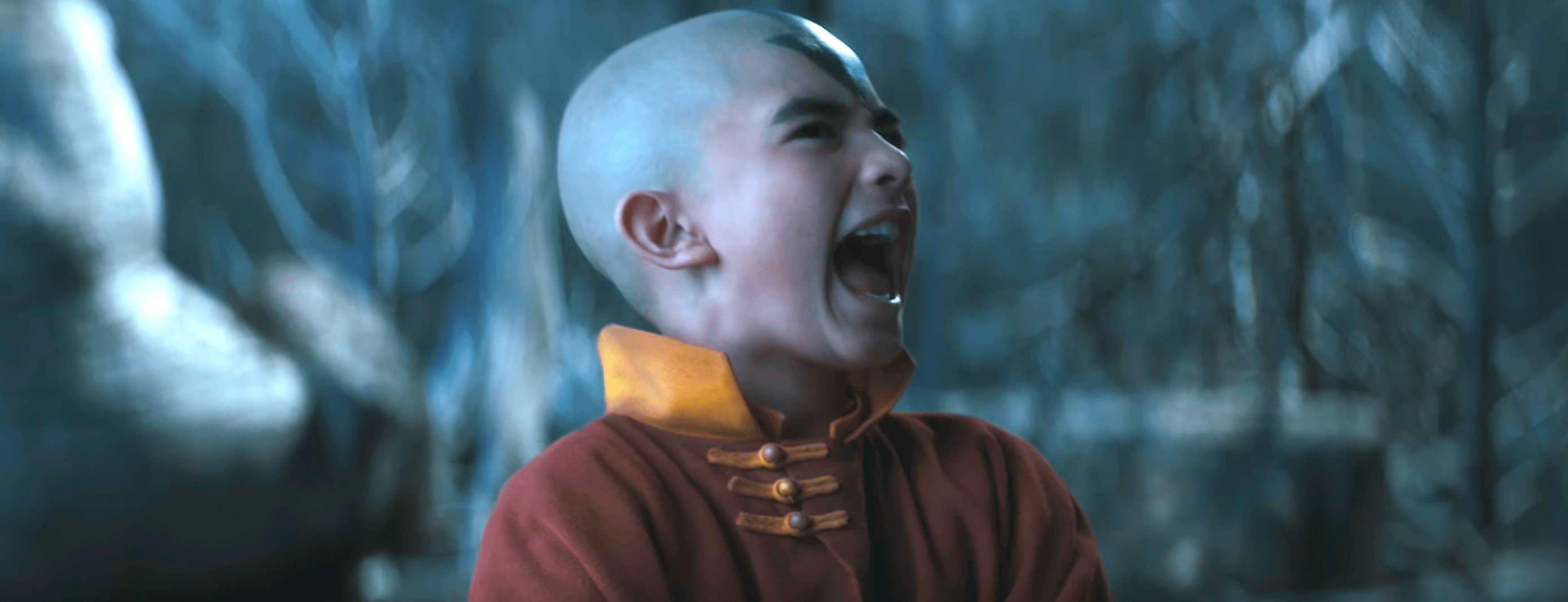“Since I can remember, we've been talking about Ciri and how much she deserves her own journey,” says Sebastian Kalemba, game director of The Witcher 4.
This likely won’t come as a surprise to many fans of CD Projekt Red’s beloved RPG series. Ever since the Polish developer announced “Polaris”, The Witcher 4’s codename, people have theorised that the series would switch perspective from the iconic Geralt of Rivia to his adoptive daughter, Ciri. She is, after all, effectively the secondary protagonist of both the original novels and The Witcher 3. “I think ‘The Witcher’ as a title refers to both Geralt and Ciri and always has,” explains Cian Maher, franchise and lore designer at CDPR. “I think she's arguably more important to the plot than Geralt himself is.”
Last we saw Ciri she was a young woman facing her destiny. But now, as depicted in a new cinematic trailer shown at The Game Awards 2024, Ciri is a fully-fledged witcher hunting monsters for profit. Kalemba explains that, following the events of The Witcher 3, Ciri has undertaken the famously painful Trial of the Grasses which has mutated her into a powerful and resilient warrior. She’s ready to take on a whole new journey in The Witcher 4, which is the first part of a planned new trilogy of single-player, open-world RPGs.
“I love this grit in her,” Kalemba says. “She's almost obsessed with the way she lives. There are some moments where you have to go with your heart instead of always going with the calculated calls. And this is what I love in Ciri. She's less calculating, following her heart, her passion, her gut feel.”
It’s this passion that will differentiate Ciri from Geralt, and subsequently The Witcher 4 from its predecessors. “We want to let players try to define her,” says Kalemba. Unlike Geralt, who has been a veteran monster hunter for the entire Witcher saga, Ciri is only just starting her career. That means there’s space for players to create their own version of her. “She's about to form her own codex on her own terms,” Kalemba reveals. “The way she actually deals with the monsters, the way she deals with quests, the adventures, it's her own unique way.”
As any veteran of CD Projekt Red’s RPGs will know, the shape of Ciri and her codex will be dictated by decisions, both big and small. We see an example of such during the trailer, in which Ciri’s interruption of a dark ritual results in the death of a girl she is attempting to save. It’s a classic example of the studio’s signature approach to choice and unforeseen consequences, but Kalemba promises a deeper approach for this fourth chapter. “We want to put player agency at the center,” he says. Achieving such has required an expansion and evolution of The Witcher’s definition of player choice.
“[We’re giving] more tools for players' disposal, to be able to not only play and go with the consequences narratively, but also gameplay-wise,” explains Kalemba. “We want to give players more opportunities to be able to feel that they define their experience.”
While The Witcher 3 is quite rightly considered among the very best RPGs of the 21st century, its admirable complexity is very much in its narrative design rather than elastic gameplay. For example, Geralt can’t become a master of stealth and silently backstab his way to victory, nor can he hone his skills in niche polearms to develop a particular fighting style. But in the years between Witcher projects CDPR created Cyberpunk 2077, an RPG with much, much greater flexibility when it comes to those kinds of choices.
“I believe the gameplay [in Cyberpunk 2077] was more varied [than that in The Witcher 3] and it allowed more freedom when it comes to creating character builds and being able to experience encounters in your own way,” Kalemba explains. Every encounter in 2077’s Night City is a flowchart of decisions: Action or stealth? Hacking or weapons? Ranged or melee? Those options are expanded and enhanced by the skills and perks you’ve invested in (as well as a healthy dose of curiosity and experimentation). And so for Ciri’s next adventure, the studio is looking to not just build upon what it achieved in The Witcher 3, but also Cyberpunk 2077 and its expansion, Phantom Liberty.
“This is something we definitely want to bring as a lesson [to The Witcher 4],” asserts Kalemba. “We want to improve on [The Witcher 3’s] gameplay but also we want to improve the alignment of the way you will be able to explore the world.” He hopes that such improvements will result in a “super coherent experience” across main story missions, side quests, and open-world activities.
CD Projekt Red definitely has the ‘bigger, better, more advanced’ aspect of a AAA sequel underway, then. But sequels are also about continuing the story, and while The Witcher 4 is the start of a new saga, it’s still the next chapter in an established character’s life. And that’s where there’s a little problem to overcome.
“The one complication is probably the idea that there is an ending in which Ciri can die in The Witcher 3,” explains Maher. Thankfully that ending, which is one of three different fates for Ciri and the outcome of several hidden choices made throughout the game, isn’t quite as clear cut as it may seem.
“There are hints in that ending that highlight the fact that she probably does not die,” says Maher. And so regardless of the events you personally witnessed at the end of your own Witcher 3 playthrough, the sequel will not “break any canon or even offend any canon.”
Of course, there will be plenty of players coming to The Witcher 4 who have no knowledge of the events of the previous games, to whom the details of Ciri’s former adventures will mean little. CD Projekt Red is very aware that it’s been a decade since the release of Wild Hunt, and that a whole generation of fantasy fans who were too young for a mature-rated RPG back in 2015 will likely start their Witcher journey with the fourth game when it finally launches.
“We want to aim for the new players,” says Małgorzata Mitręga, executive producer of The Witcher 4. “The wider audience, and also the people that know the franchise but who maybe do not play our games.” As such, The Witcher 4 is being pitched as the start of something new as much as it is the continuation of something old.
As part of that, Kalemba and Mitręga explain that they’re ensuring The Witcher 4 is an approachable experience. They want “everyone who cares” to play. But there doesn’t seem to be any sign of the studio’s trademark RPG depth being watered down in payment for that approachability. “We create story-driven games, so we want to make sure that people that buy games for story, they'll be able to experience the story in their own way and they will be simply able to approach it,” Kalemba explains. “But people that are looking for specific challenges, they will also be able to experience the story in a challenging way.”
The studio faces a much larger challenge than just crafting a sequel that’s approachable for newcomers, though. While Cyberpunk 2077 is now regarded as a landmark RPG, its launch was one of the highest-profile disasters in industry history. It took CD Projekt Red years to fix the game’s problems, a project necessary not only to make the game work, but also to save the company’s reputation. Those years were more than just transformative for Cyberpunk, though; the road to 2077’s notable comeback resulted in significant structural changes at CDPR. Changes that hopefully lay the groundwork for better things for The Witcher 4.
“The way we produce right now has changed in a very good way,” says Kalemba. “We are very mindfully defining the stages of the production. We are very mindfully trying to scope it, making sure that the foundation is there. I already see that it’s helping us to make sure that whatever we create right now is super coherent across the board. This way makes us feel that we control this super complex environment more than we used to, and that also makes everyone feel more secure when it comes to developing generally on a daily basis.”
The governing rule among these new changes is “let it cook.” That’s evident in the way the studio has allowed more time for pre-production – The Witcher 4’s existence was publicly announced back in October 2022, but it has only just gone into full production. But there have been other significant changes. During the development of Phantom Liberty, for example, the studio was restructured into “content teams” where multiple disciplines work together in tightly co-ordinated groups to create particular sequences and quests.
These changes aren’t just about ensuring game quality and a smooth eventual release, though. During the development of Cyberpunk 2077 it was reported that studio staff endured long working hours and mandatory overtime demands. Rewind the clock further back and CDPR faced similar accusations while working on The Witcher 3. The studio’s new approach aims to create a better working environment for the people making The Witcher 4.
“I think that it's already helping [create a better working environment],” says Mitręga. “I guess that the way [forward is] to produce it in a healthy manner so that people still can find fun in what they do. And that's what is inspiring, that's what makes the quality so high.
“We are planning different ways we communicate with the teams,” she continues. “Teams are planned differently than we were [on Cyberpunk 2077], so it's already helping.”
CD Projekt Red isn’t ready to reveal a launch date for The Witcher 4 yet, possibly as a result of that “let it cook” mantra. But, if the cinematic trailer is anything to go by, the recipe will have to be exact. While IGN visited the studio’s Warsaw HQ ahead of The Game Awards, the team explained that the trailer had gone through dozens and dozens of revisions, with each new version fine-tuning the presentation and delivery of The Witcher 4’s first story. CD Projekt Red has approached this cinematic with as much precision as it has the game at large, iterating over and over again until it’s exactly right.
“Believe me, behind every single scene there was an intention,” says Kalemba. “There is, in any single frame, no coincidence in this trailer. We were building it in a way to sell a very, very coherent short story with a beginning and climax.”
“We also wanted to have the full experience,” adds Mitręga. “Because this is coming home for the old [fans], but this is also an introduction for the new audience.”
After a decade of waiting, nothing but a full experience would do for those old fans. And that’s what we have; the six-minute trailer tells not just a complete short story, but also contains all the hallmarks of a classic Witcher quest: a contract, a kill, and a consequence. For veterans of Geralt’s adventures, it's a good reminder of why it’s worth coming back for a fourth installment. As for new fans, it’s about as good a taste of The Witcher’s magic as you can get in advertisement form. No doubt The Witcher subreddit is about to be inundated with a thousand “how do I get into this?” posts (and if that is a question you have, then our chat with CD Projekt Red’s Witcher loremasters should be your next stop.)
As for what’s next, CD Projekt Red won’t say. With full production only just spun up, we could be in for another long wait until the next details about Ciri’s new adventure are ready to be shared. But what little the team was willing to share is already something to chew on with anticipation. The expectations around RPGs have shifted a lot since The Witcher 3 launched in 2015. Games like Baldur’s Gate 3 and CDPR’s own Cyberpunk 2077 have put deep emphasis on worlds that react, respond, bend, and break under the pressures inflicted by players. How The Witcher 4 will play with those expectations remains to be seen, but CDPR’s promise of a Ciri that can be defined by those who play as her is as good a place as any to start.
Matt Purslow is IGN's Senior Features Editor.















